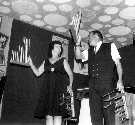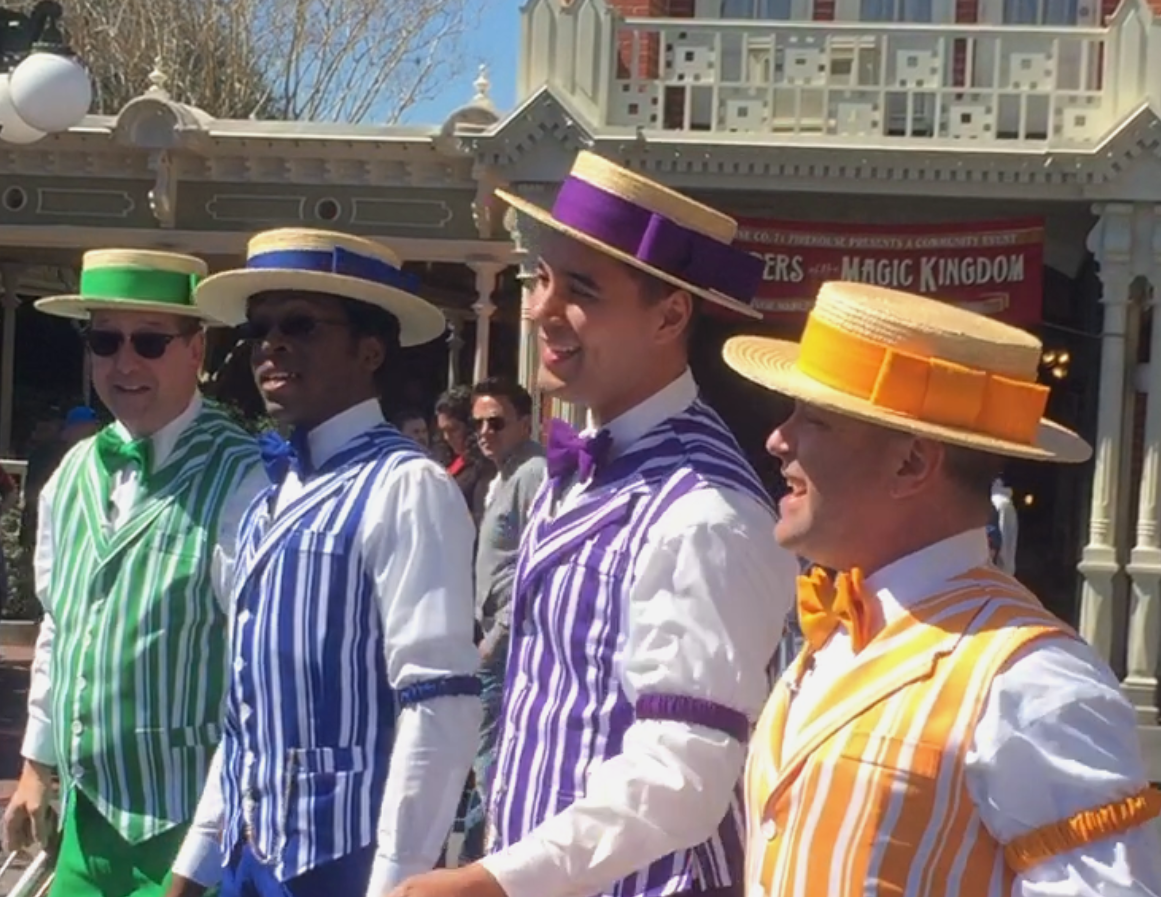
I was very intrigued by a chance encounter with the Dapper Dans, a Main Street barber shop quartet at the Magic Kingdom, in Walt Disney World, Orlando, Florida, on February 27, 2016.
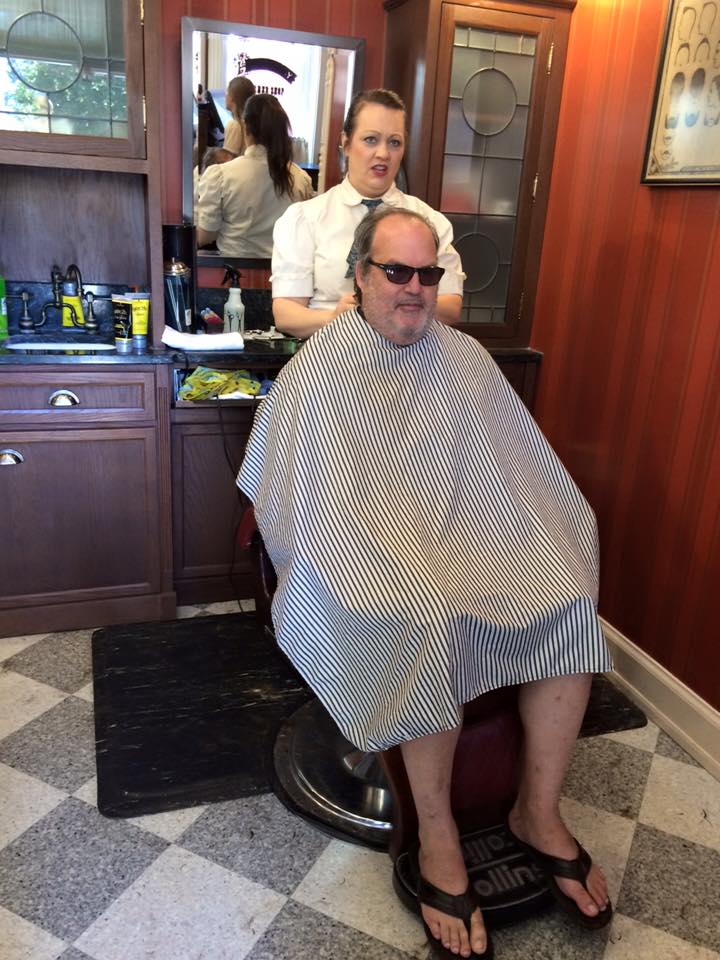
In addition to tight vocal harmonies and pin stripes, each of the Dapper Dans also sported a pair of tuned metallic idiophones that closely resembled Balinese anklung to accompany them during their Main Street performances.
In a post-concert discussion with the Dans I learned that the instruments in questions were antiques from the early 20th century, originally manufactured by the J.C. Deagan Company in Chicago.
Deagan Organ and Aluminum Chimes

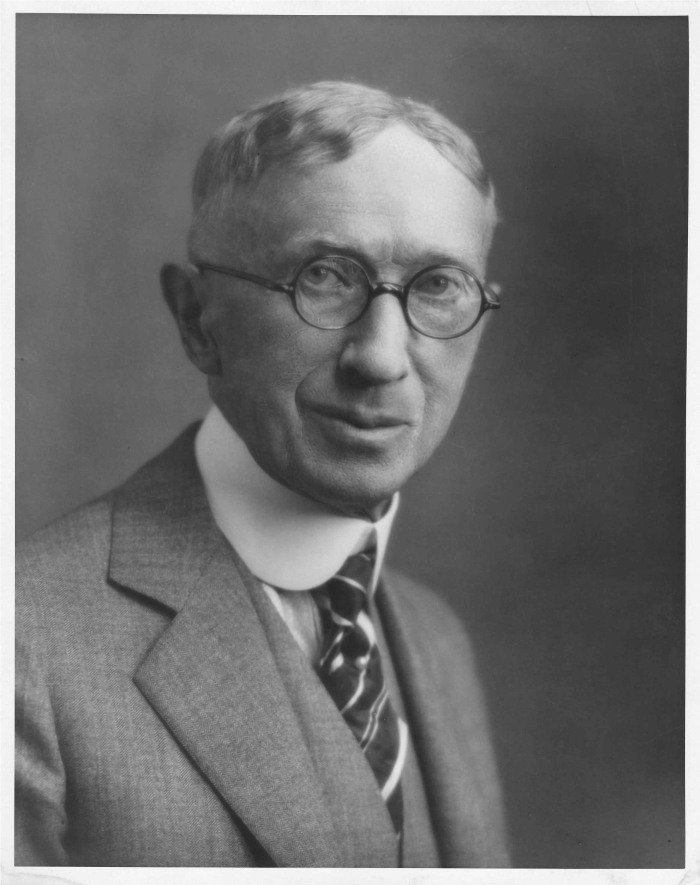
John Calhoun Deagan (1853-1934) was an inventor and entrepreneur who specialized in tuned percussion idiophones. He is best known for his development of the marimba, xylophone, vibraphone, and orchestral chimes. He is also credited with the establishment of 440 Hz as the standard reference pitch in the United States.
J.C. Deagan’s original patent, for what he called organ chimes, was dated March 6, 1900.
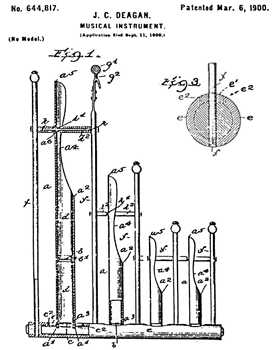
Deagan organ chimes were hand-made from either nickel-plated steel or aluminum. Steel organ chimes had four tubes, tuned in octaves, while the aluminum chimes only had three.
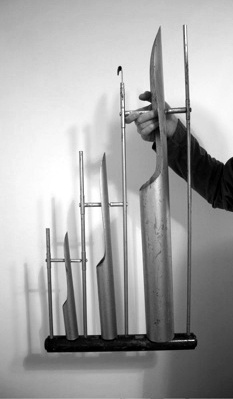
Even though the tubes themselves are made from metal instead of bamboo, the design comparison with the bamboo anklung is unmistakable.
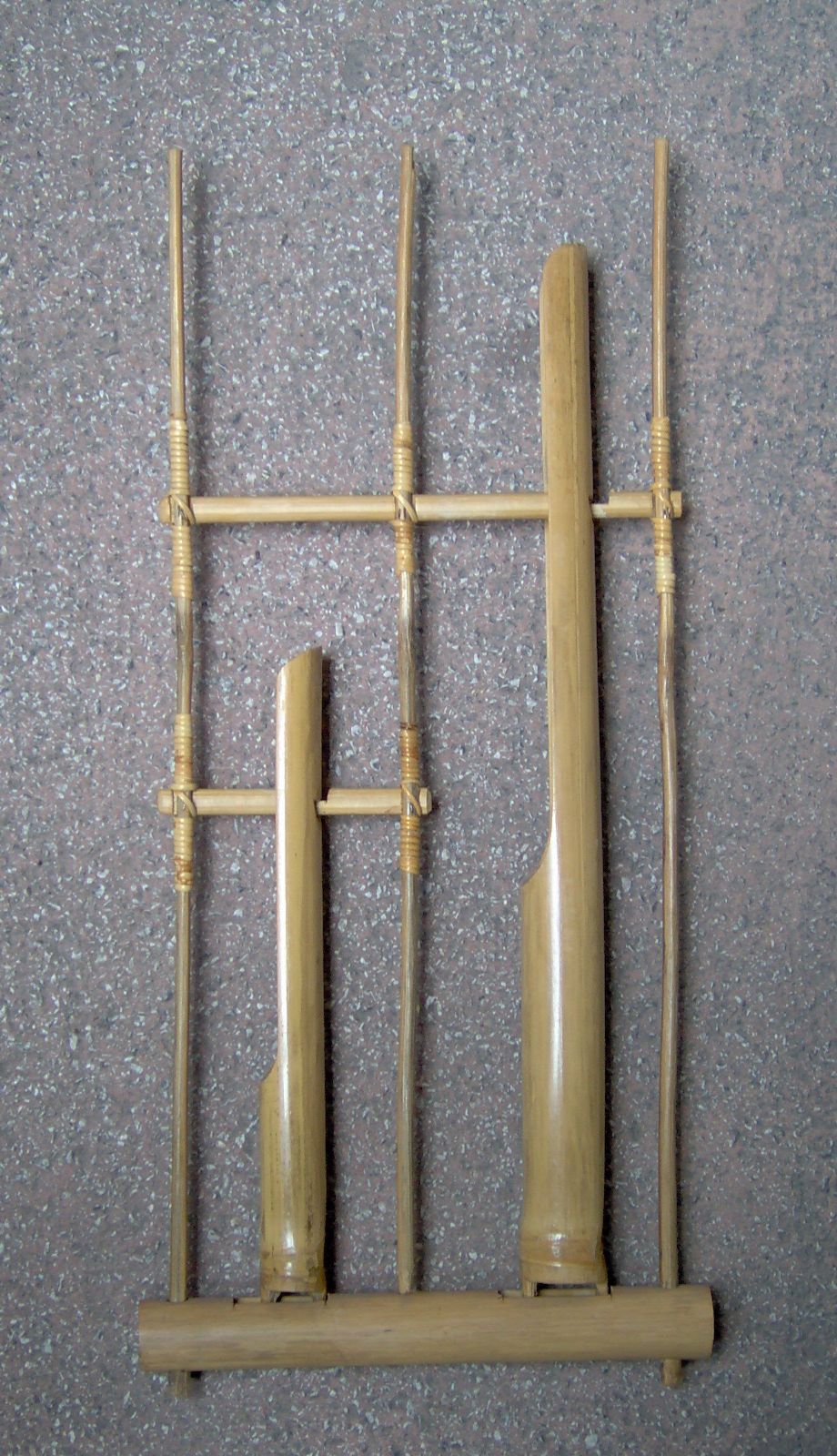
Both produce sound when the bottom of the tube knocks against the end of a slot cut into the base of the frame. The the sliced top and the length of the bamboo resonator tubes allow for precise tuning. The name “angklung” may onomatopoeically refer to the sound the instrument makes when struck or shaken, or it may also refer to the original four-note scale of the instrument, which intentionally omitted the fifth tone from a pentatonic scale.
Copy?
or
Coincidence?
Another coincidental similarities between Deagan organ chimes and bamboo angklung are: both instruments are tuned in sets; and both can be played suspended on racks.
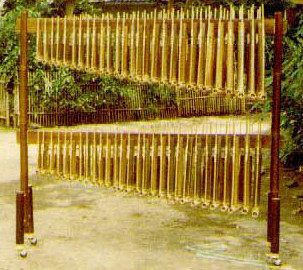
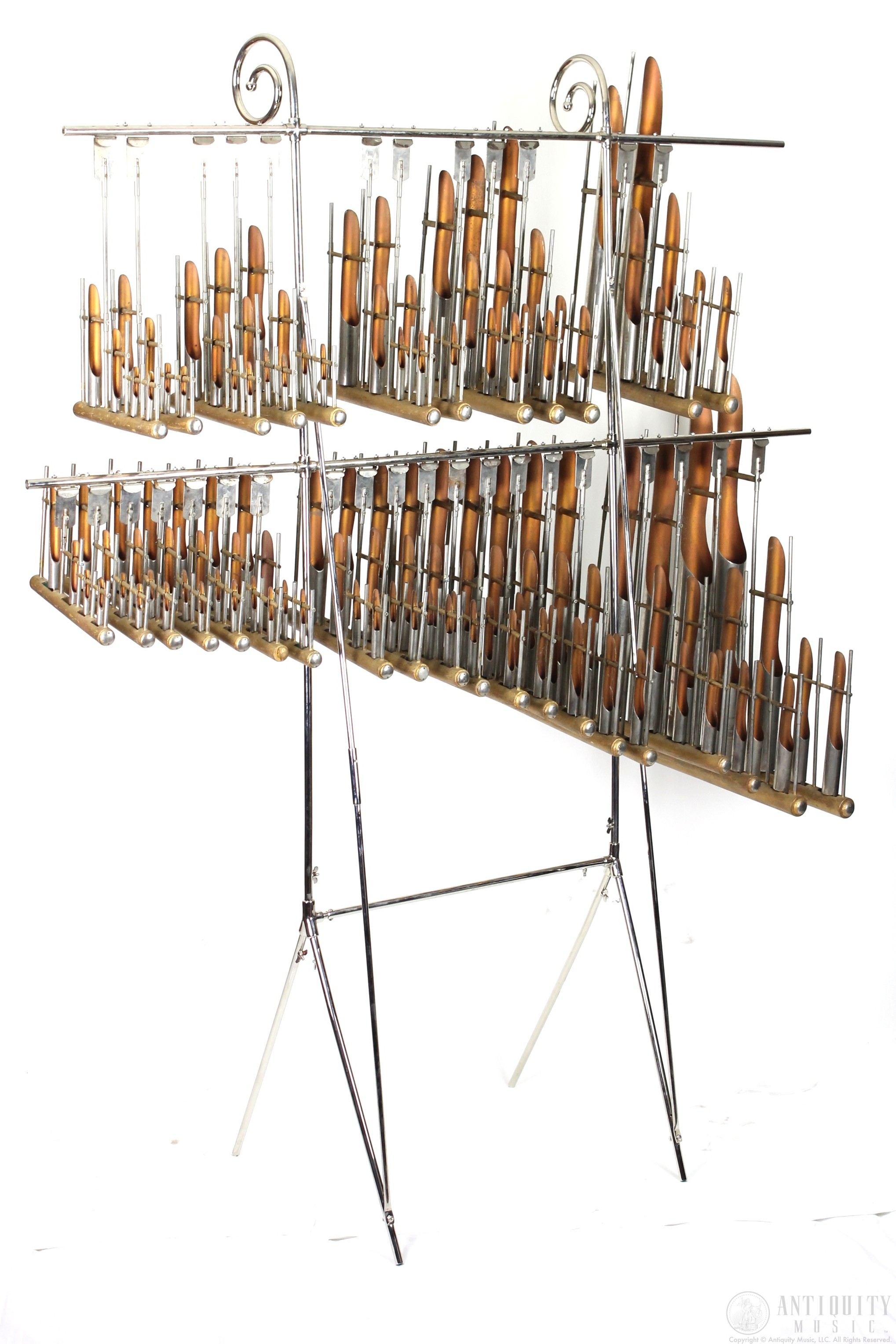
The Deagan organ and aluminum chimes were manufactured and sold as novelty instruments from circa 1900 to sometime in the early 1920s. There appears to be little documentation about the origin or inspiration of the J.C. Deagan organ chime design. However, the Gary Goss website states that “John Calhoun Deagan got the idea for the chimes when he attended the 1893 Chicago World’s Fair, where he saw an Indonesian group perform on the bamboo angklungs.”

Continuation of the Deagan Organ Chime Legacy
After the manufacture of the Deagan organ chimes was halted in the early 20s, they continued to be favorited by select groups of novelty acts, which included Vaudeville entertainers, family bands, circus performers & famous Australian composers.
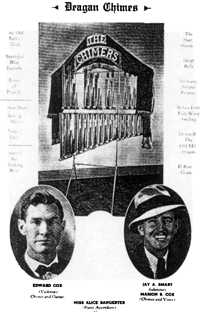
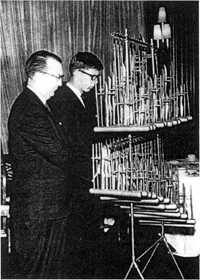
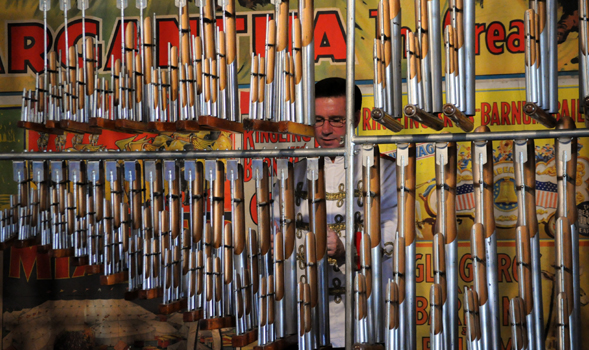
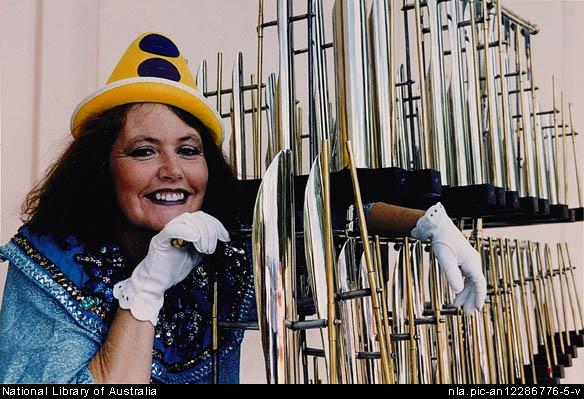
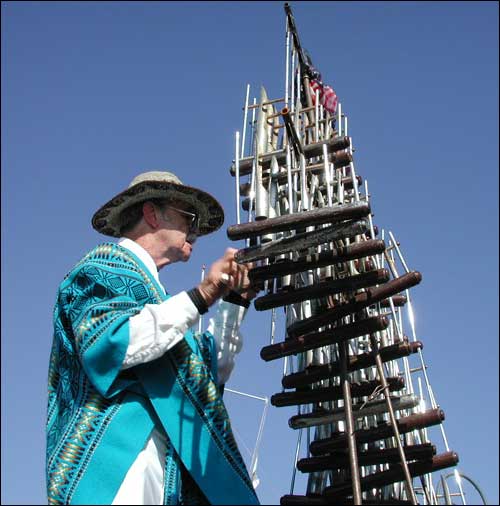
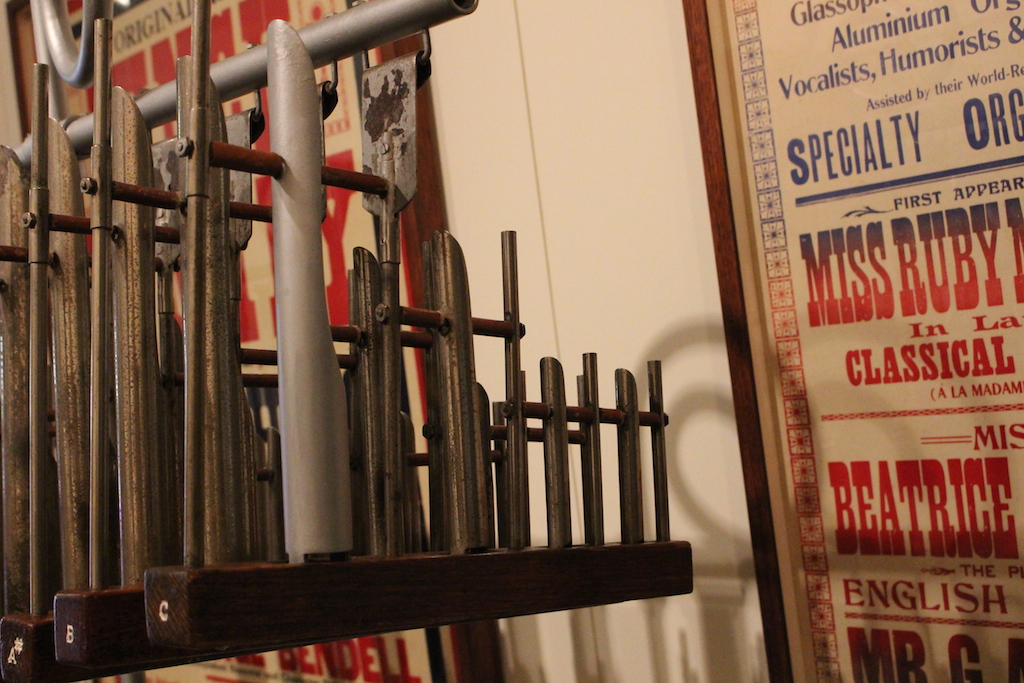
Bamboo Angklung
The exact origin of the bamboo angklung is unclear. It is believed that perhaps it came from Sunda in West Java, spreading to Sumatra, Kalimantan, and Bali where they were played in conjunction with an ensemble of bronze slab-key and gong idiophones. Each angklung, played by a single musician, was tuned to one pitch of a four-tone scale. Complex melodies and rhythms could be produced by hocketing and sustained sounds could be attained by continuously shaking the instrument (similar to a bell choir). These older ensembles are now rare in Bali, but the name angklung and the shaken bamboo instruments have continued to be played throughout Indonesia, in contexts such as this Kentongyan Banyumas, from Central Java.
https://youtu.be/R6G1_GZL3I8?t=3m28s
In 1938, Daeng Soetigna, from Bandung, West Java created an angklung based on the diatonic scale. Since then, the angklung has been a popular genre used for both education and entertainment in more of a Western musical context. In 1966 Udjo Ngalagena, a student of Daeng Soetigna, opened his “Saung Angklung” (House of Angklung), in Bandung, as a centre for its preservation and development.
“Titanic” Saung Angklung Udjo – Bandung, West Java, Indonesia
On July 9, 2011, 5,182 people from many nations played together in Washington DC and are listed in the Guinness Book of Records as the largest angklung ensemble. Indeed, the angklung as achieved international notoriety as a contemporary, and somewhat exotic, instrument. UNESCO designated the angklung a “Masterpiece of Oral and Intangible Heritage of Humanity” on November 18, 2010.
Contemporary Balinese Gamelan Angklung
In present-day Bali there is a continued strong presence of gamelan (translated as orchestra) angklung, which no longer include shaken bamboo instruments. In its contemporary context, gamelan angklung still maintains its four-tone melodies, which are played by interlocking pairs of slab-key gendér (metalophones), struck with wooden hammers.
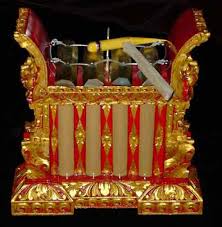
The gendér are accompanied by hanging gongs, two-headed barrel drums, and suling (flutes).
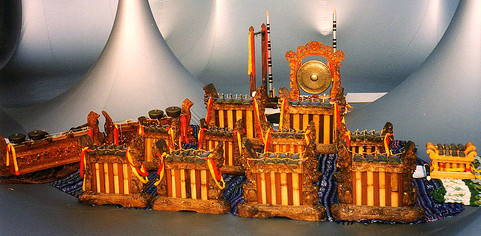
The complex woven texture of its interlocking rhythms “presents a cheerful, open, and rhythmically intricate musical landscape, expressed in the fluid grace of its traditional repertoire.”
Although Gamelan angklung plays musical offerings during Balinese temple ceremonies, its most characteristic and identifying context is in Hindu-based rituals related to death. It is played as an individuals mortal remains are brought from home to a temporary burial, and again during the elaborate cremation ceremony, where one’s soul is released back to the gods.
Today, Gamelan angklung has strong emotional associations for many Balinese, evoking particular combinations of sweetness, sadness, and nostalgia.
However, in contemporary Bali the bamboo angklung has been relegated to a popular tourist trinket.
Czech Tourist in Borabadur Market
Bub Thomas
The J.C. Deagan organ chimes/angklung were brought to Main Street Magic Kingdom by Dapper Dan Bub Thomas (left), when the park in opened 1971.
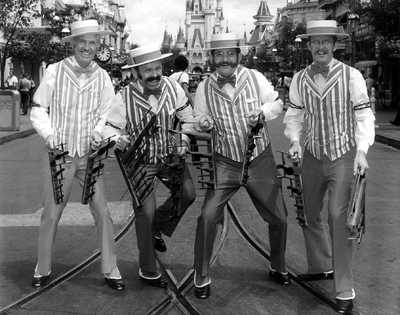

Bub got the set of Deagan organ chimes from his vaudevillian friend and partner, comedienne/entertainer Billie Bird.

Billie taught Bub how to play the chimes, while working Southern California clubs together in the 1940s and 1950s.
Bub then used the organ chimes in a variety of other quartets including the Terpsichords.
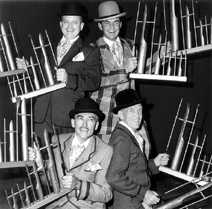
The Deagan organ chimes have now become part of the Dapper Dans’ long-standing barber shop quartet tradition at the Magic Kingdom.
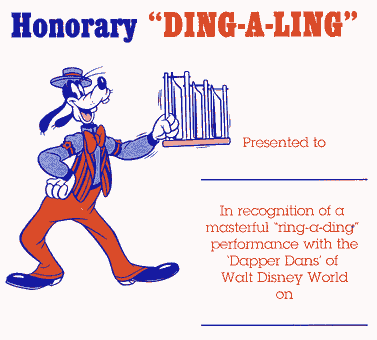 And, where countless visitor’s have been entertained, and perhaps even awarded honorary recognition by Goofy himself!
And, where countless visitor’s have been entertained, and perhaps even awarded honorary recognition by Goofy himself!
World Gamelan Angklung
What is remarkable to me is, that at present, both Indonesian and Deaganean traditions seem to showcase the “anklung” ensemble in performances of Western classical and popular music. The internet abounds with countless examples at a global level.
“Beethoven’s 5th” Indah Putri – Japan
“Mission Impossible” Angklung Hamburg Orchestra – Germany
Rihanna’s “Umbrella” Siarn Langsung – Melaysia
“Bohemian Rhapsody” Saung Angklung Udjo – Bandung, West Java
“New York, New York” Angklung Einhoven – Netherlands
Perhaps it is a small world after all?
“It’s a Small World After All” Dapper Dans – Orlando, Florida, USA
…but I have two more burning questions:
1) Owing to the rarity of the original organ chimes, what would happen if Deagan “angklung” were again available worldwide?
2) Is the world ready for a metal angklung revival?
reference links:
“Deagan Organ Chimes”
“The Deagan Resource”
“Gamelan Sekar Jaya”
“Dapper Dans Tribute”
“Indonesian Angklung, one of Masterpiece of Oral and Intangible Heritage of Humanity”
“Gary Goss Playing His Deagan Aluminum Chimes on the Santa Monica Pier”

